|
English country villages are "under assault" from greenfield developers building housing estates on rural land, campaigners warned last night.By ROBERT KELLAWAY 03:01, Mon, Jan 16, 2023 | UPDATED: 09:38, Mon, Jan 16, 2023 Analysis by the Campaign to Protect Rural England suggests there are currently more than 400,000 homes with planning permission on greenfield sites. Even if planning applications are rejected at local authority level as inappropriate they are often being granted permission at national level on appeal, councillors report. The result is massive pressure on services such as doctors, dentists, schools and village lanes clogged with traffic - and the despoiling of some of the most beautiful parts of the British countryside. Paul Miner, from the countryside charity CPRE, said building should be concentrated on brownfield sites where residential or industrial development has already taken place. “At the current time, there is room for 1.2 million new homes on previously developed brownfield land,” he said. “Much of it is in town and city centres crying out for regeneration and where there is an acute need for new homes. It is simply immoral to needlessly destroy the countryside when there’s no need.” MP Laurence Robertson, who represents many Gloucestershire villages facing extensive new-build development, said: “Rural villages are under assault by this greenfield development. The expansion is so rapid it does not give the community any chance to expand at a sensible pace. “I have helped residents in my village and others object to these developments and raised concerns but once an appeal is granted there is little that can be done.” Ironically, local businesses such as village shops and pubs seem not to benefit from the influx of new-build residents who tend to be two-car families who often shop online. 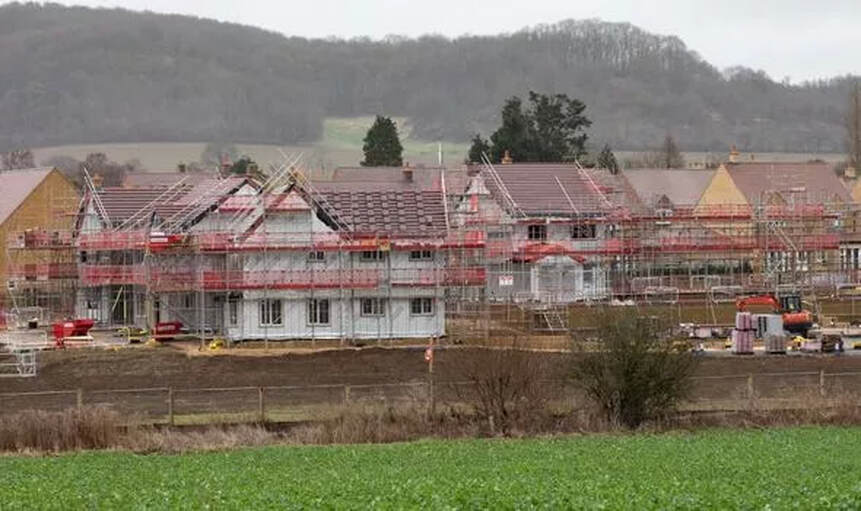 The issue is a countrywide one as councils search for ways of meeting what have been mandatory housebuilding targets. Green belt land being offered up for development by London and Home Counties councils has increased in area by a fifth to an area of more than 19,400 hectares since last year, research by the London Green Belt Council and the Campaign to Protect Rural England found. If all those plans for areas around London and in the Home Counties go ahead, about 75 square miles of protected countryside would lose green belt status. Councils are also relying on “out of date” figures from 2014 for population growth to justify plans to build thousands more homes on green belt land around the capital, the groups claimed. And although it is widely accepted that more homes are needed, the issue has become a political hot potato with rural MPs warning that Conservative voters will desert the party if villages become swallowed up by sprawling development. Yesterday it was reported nine local authorities in England have paused or scaled back their plans after Michael Gove announced last month that the government would no longer pursue a mandatory target of 300,000 new homes a year. The planning consultancy Lichfields has calculated that 33 councils have halted or cut their housebuilding plans in the past two years. However, for many communities, a change in policy is already too late. The Daily Express was alerted to the problem by residents in the quintessentially Cotswold village of Alderton in Gloucestershire. Its plight is typical of many rural communities as local government figures show greenfield development on rural land has almost trebled since 2008. On the southern border of an Area of Outstanding Natural Beauty, Alderton is centred around the 14th century parish church of St Margaret of Antioch. The village boasts one pub, one shop, one primary school and 18 listed buildings, many dating from the Tudor period. Since 2015 two new-build estates have been completed at Alderton and a third is under construction. In addition, developers are seeking permission for three larger estates totalling 139 homes which are all likely to go to appeal at the Planning Inspectorate where they will probably be approved. Alderton Parish Councillor Mike West, 73, said: “We accept that there is a housing shortage, that people need good homes and we have to do our share. “Rural villages such as ours can easily accept some new development and indeed, if done well, it can be highly beneficial to the local community. “But in the case of Alderton we may end up with a total of six new-build estates in a village of 277 dwellings and a population of about 900. “These developments would almost double the number of houses and more than double the population in a very short period of time. “Everyone who moves here will need at least one car as there is no public transport to speak of. The village will become an urban dormitory.” Fellow councillor Nicki Broderick, 61, added: “At the minute our local GP’s surgery is in a village nearby, Winchcombe. They are already overwhelmed by the demand on them. “The trouble is this housing is going up with no thought to the services and infrastructure that people who live here are going to need. “It is extremely frustrating as Cheltenham, Tewkesbury and Gloucester spent four years developing a Joint Core Strategy for housing in the region. The developers seem to ignore that and stick in applications for the most profitable sites they can find. “They don’t seem to care if their applications are rejected, because they know they have a pretty good chance of getting approval on appeal in the end. We are getting planning by appeal rather than any sort of coherent strategy and it is going to cause a lot of damage. “I believe brownfield sites ought to be developed before any new housing can be built on what were until very recently farmers’ fields. Local resident Sue Collins, who has lived in Alderton for 18 years, is hoping a planning appeal for construction of 56 new homes at the end of her garden will be rejected. She said: “At the minute I look down the garden and on the other side of the fence there are a couple of horses in a paddock. “I don’t know what it’s going to be like with more 50 houses going up there instead, I just hope very much that it doesn’t happen.” Landlady Wendy Wakeman has been serving the village for 23 years with her husband Mike at Alderton’s thatched pub, the Gardener’s Arms. She said that the two new build estates already completed had not significantly increased her business. Wendy, 57, said: “At first it was great, people had just moved in and they came here and said ‘ooh isn’t it nice having such a lovely pub in the village.’ “But after a couple of visits they tended not to come back very much. People have busy lives and after a long commute in the car popping into the pub of an evening may be the last thing on their minds. “We love the village but our business depends really on walkers, holidaymakers, rotary club visits and other customers who make a special trip to visit us.” The owner of the Alderton Village Store and Post Office for the last 11 years, Yari Aram, 70, added: “The people in the new estates are very nice but I do not see them often. “They come to return things by post that they have bought on the internet but in most cases they are not my regular customers.” The new housing is popular with successful families with young children and some of the units must offer some affordable housing as part of the development. Gavin Gallagher, Planning Director at Rainier Developments which is hoping to build 48 homes at Alderton, said: “We can confirm that we have lodged an appeal for our outline planning application for up to 48 new homes on land in Alderton. “Currently, we believe that Tewkesbury Borough Council does not have a long-term plan in place for the supply of land to meet the significant levels of demand for new homes, and our proposals are designed to help the Council to address this ongoing issue. “Our proposal for additional housing in Alderton will also support the long-term futures of existing services and facilities, including the primary school which is undersubscribed, as well the village’s shop and pub. “The proposed development is well-located on the edge of the existing settlement, is close to main roads, and has had regard to all relevant environmental factors during its evolution, all of which is reflected in the final proposed design. “Our plans will also benefit the overall sustainability of Alderton, with the provision of public open space, community areas and green infrastructure, including provision for 10 biodiversity net gain, which is again outlined in our proposals.” Other developers hoping to build at Alderton were approached but did not comment. Development of brownfield sites previously used for residential or industrial purposes reached a peak in 2008 but declined by 38 percent in the period to 2017. The amount of greenfield land being used for housing developments has increased from 3681 acres in 2006 to 9115 acres in 2017, an increase of 148 percent.
A spokesman for the Planning Inspectorate said: “Inspectors are independent and impartial. When making a decision the Inspector fully considers the evidence submitted at the appeal and takes account of current planning legislation, policy and guidance. “We do not report on the number of greenfield development planning applications which are approved at appeal having been declined by the local authority. “Overall, about two thirds of our decisions agree with Councils and only about a third of appeals result in planning permission being granted. That has remained consistent over many years.”
0 Comments
Leave a Reply. |
Mark Watts-JonesI live in Alderton and look after this website. Archives
April 2024
Categories
All
|
- Home
-
Planning
- Planning in Alderton
- Alderton NDP
-
Alderton planning application map
>
- A - South of Beckford Road 2014 - Charles Church
- B - West of Willow Bank Road >
- C - East of Willow Bank Road 2015 - Cala Phase 1
- D - East of St Margaret's Drive >
- E - Adjacent to Gretton View >
- F - Rear of 18-26 Orchard Road >
- G - South of Dibden Lane >
- H - East of Willow Bank Road 2022 - Cala Phase 2
- J - South of Shakespeare Close and Beckford Road
- Organisations
- Village Services
-
Village News
- About
- Contact
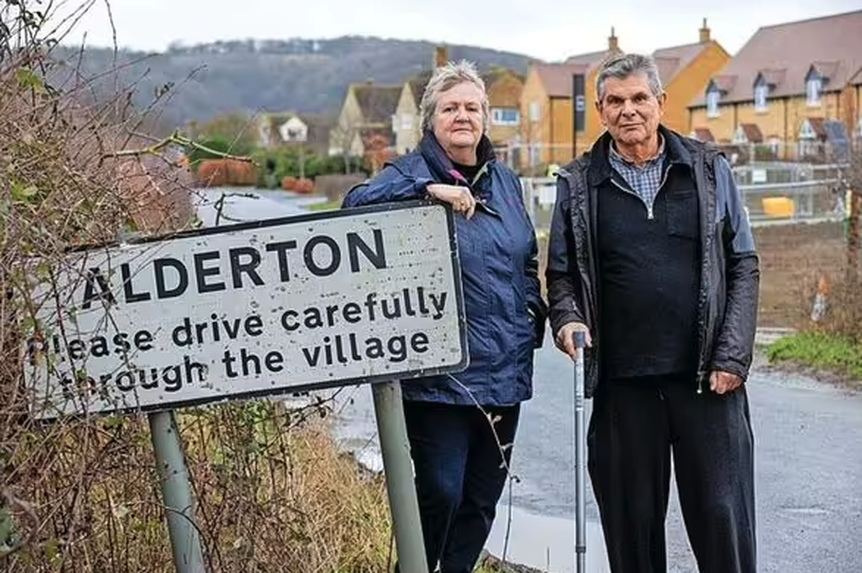
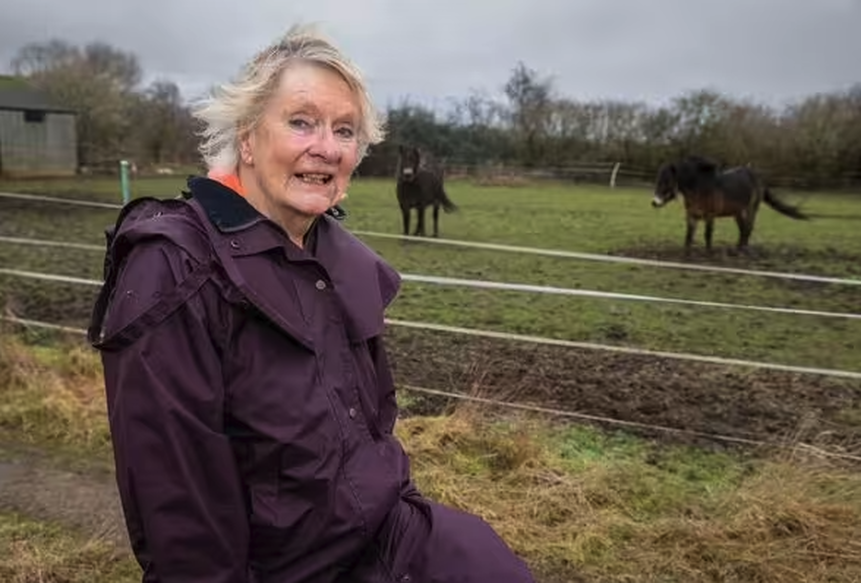
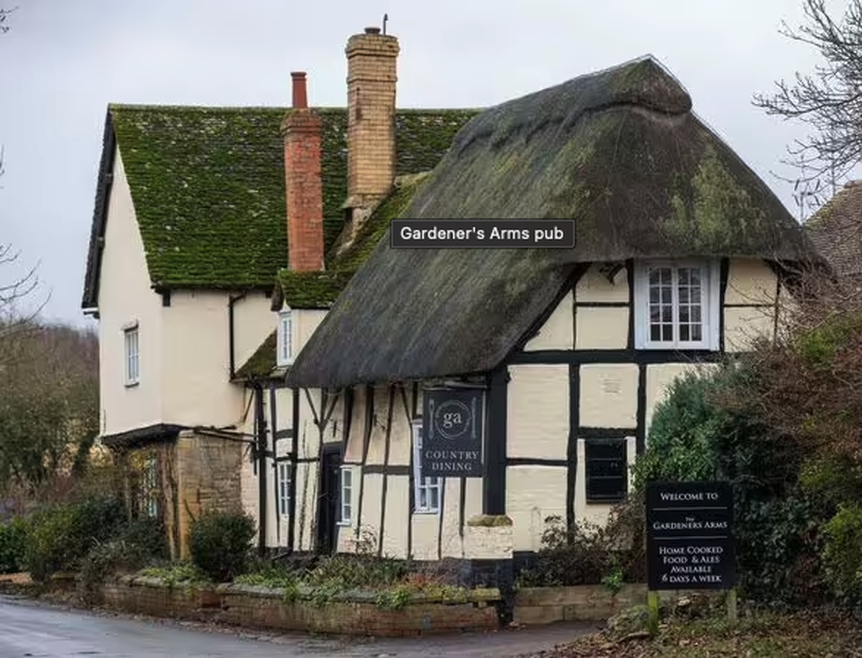
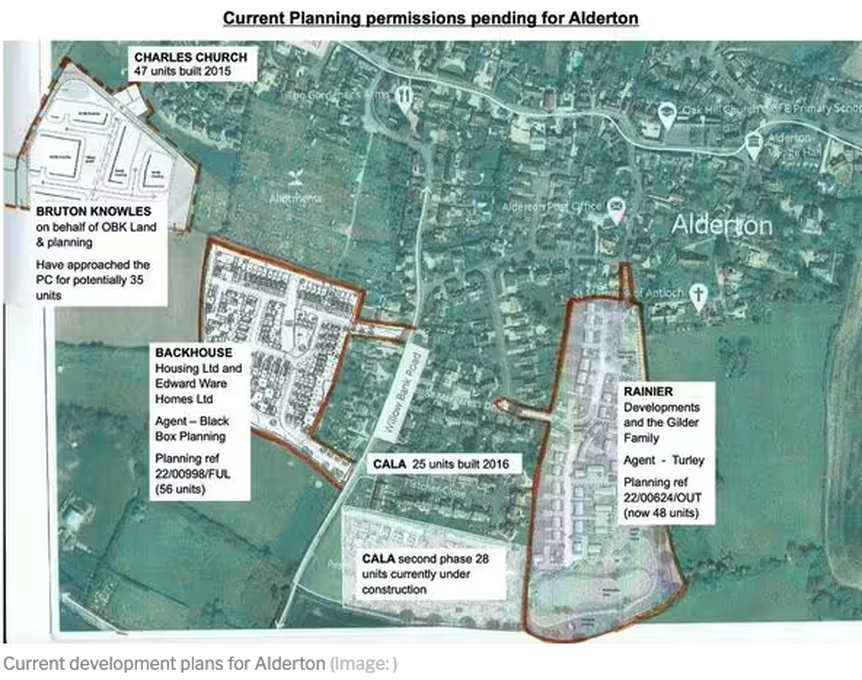
 RSS Feed
RSS Feed
